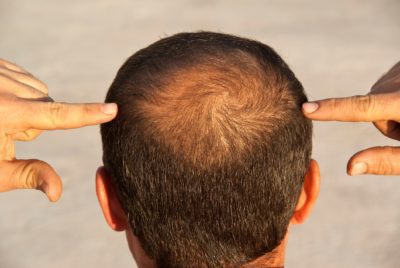Whether it’s a receding hairline, a not-so-subtle bald spot, or widespread thinning all over, experiencing hair loss is no fun – no fun at all. And while more than 80 percent of men and nearly 50 percent of women will experience some level hair loss or thinning during their lifetimes, you don’t need have to sit by idly and just watch.
thinning all over, experiencing hair loss is no fun – no fun at all. And while more than 80 percent of men and nearly 50 percent of women will experience some level hair loss or thinning during their lifetimes, you don’t need have to sit by idly and just watch.
Today, there are a variety of hair restoration options for slowing down (and even stopping) – there also are methods for regrowing hair. If you’re not quite ready for a hair transplant, here are six non-surgical options to consider. But first, keep in mind that the treatment that’s best for you will depend on a variety of personal factors, including type of hair loss, causes, and your medical history. Always consult with your doctor before starting any treatment.
Platelet-Rich Plasma (PRP) Therapy
A newer method of treating hair loss, PRP therapy involves using different growth factors and proteins to stimulate hair growth and promote healing; in this case, one own’s platelets obtained from their blood sample are injected into the scalp. However, PRP isn’t for everyone. The ideal candidate is someone in the early stages of hair loss, whose hair follicles are still functional, and doesn’t have chronic skin problems, dermatological issues, or blood disorders.
Low-Level Laser Therapy (LLLT)
LLLT uses low-intensity light to stimulate cell growth in the hair follicle bulge. It is also used to treat other conditions, including stroke recovery and wound healing. LLLT has shown positive results for those with post-menopausal, postpartum, and illness-related hair loss. Because it does not have the ability to revive dead hair follicles, LLLT is not a sound option for those experiencing full baldness.
Scalp Micropigmentation (SMP)
SMP uses ink to create the illusion of natural hair by creating various dots and shades that mimic a close shave or give the appearance density to a thinning crown. SMP can also camouflage scarring.
Topical Solutions
Topical hair loss products such as tretinoin, minoxidil, shampoos, and serums are applied directly to the scalp. Individuals can expect to see visible results within a few months of continued use; however, results can vary greatly. Consult your healthcare professional before starting a topical treatment as some can cause adverse health effects.
Hair-Stimulating Tablets and Medications
Propecia, approved by the FDA, has been clinically proven to stimulate hair growth for those experiencing male pattern baldness. Vitamins, minerals, and supplements can help with hair loss caused by medications or illness, while DHT blockers can slow or stop hereditary hair loss. Consult with your doctor before starting a hair treatment regimen.
The one sure way to restore your full head of hair is through hair transplant surgery. Here at DiStefano Hair Restoration Center, we have succeeded time and again in restoring the looks and confidence of men and women alike. Plus, we offer a variety of treatment options, with one just right for you. Contact us today to schedule a free consultation. You’ll get to know members of our medical team and get answers to all our questions.


